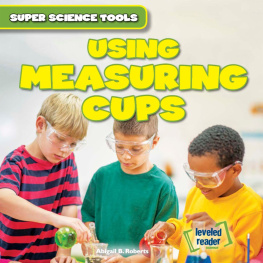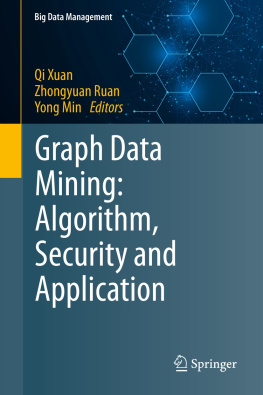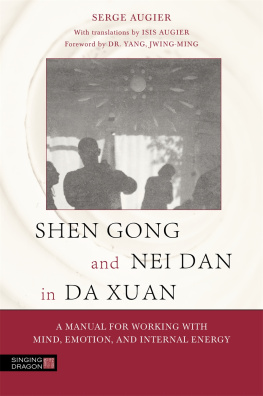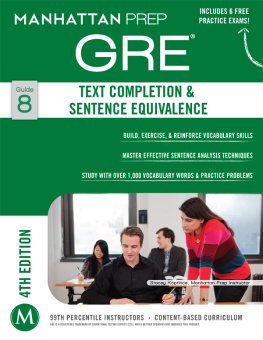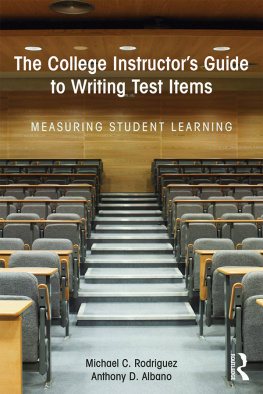Copyright 1998 by Lawrence Erlbaum Associates, Inc.
All rights reserved. No part of this book may be reproduced in any form, by photostat, microfilm, retrieval system, or any other means, without the prior written permission of the publisher.
This edition published in the Taylor & Francis e-Library, 2008.
"To purchase your own copy of this or any of Taylor & Francis or Routledges collection of thousands of eBooks please go to www.eBookstore.tandf.co.uk."
Acknowledgments
I wish to thank all the investigators using the Sentence Completion test (SCT) who graciously supplied us with their data and permission to use the data in revising the scoring manual:
Dr. Sarah Beaton; Dr. Dorothy Billington; Dr. Michael DAndrea; Dr. Howard Chandler; Dr. Diane Novy; Dr. Dane Ver Merris, and Dr. Gervase Bushe. I hope they will convey to their hundreds of subjects our gratitude for the evident sincerity in virtually all of their replies.
Dr. George Vaillant is a special case, because he gathered the SCT data but my colleagues scored it for him, and I assumed we had a right to use the scored responses, anonymously of course, for our purpose.
The same holds true for many of our own students, whose data, often their dissertation research, became part of our main sample: Dr. Lawrence D.Cohn; Dr. Gabrielle Israelievitch; Dr. Leslie (Gans) Luchene; Dr. Annie Rogers; and David Patterson.
A research project of the duration and complexity of this one cannot succeed without the able and generous assistance of many hands.
Some able and devoted undergraduate and graduate students have served as research assistants, including Tina Nguyen, Susan Lay, Alison Gaa, Claire Simon, and Miri Goldstein. Doyle Cozadd has been my computer consultant and editorial assistant.
Postdoctoral research associates: Vicki Carlson, Kathryn Bobbitt, Lawrence D. Cohn, and P.Michiel Westenberg have been valuable colleagues in our work.
Dr. Westenberg is also fulfilling the important task of extending the range of the test to children, the obvious place to study development, but not an easy place to study sentence completions.
The first graduate student to take part in the study of womens attitudes, the study that after many years grew into the SCT for ego development, was Dr. Kitty LaPerriere. The imprint of her insights is still visible in this revised scoring manual.
Our longest standing colleague, Dr. Augusto Blasi, came into our work early and is still sustaining us with the breadth of his knowledge and his incisive insights,
My principal debt is to Dr. Vicki Carlson and Dr. L Xun Hy, who, as the table of contents shows, are authors of major chapters. L Xun Hy was responsible for gathering the data and programing it for managing by computer. He also suggested having a chapter on multicultural uses of the SCT. Dr. Carlson has shown the many uses of the SCT in other cultures and other languages, thereby supplying an important kind of validation of the concept and the method. Both Dr. Carlson and Dr. Hy have contributed to this book beyond their own chapters.
Jane Loevinger
CHAPTER 1
History of the Sentence Completion Test (SCT) for Ego Development
Jane Loevinger
Washington University
Prior to the 1950s, most subjects for psychological research in the United States were normal, White, native-born men, or children. The few studies of girls and women tended to be about the nature and extent of gender differences in intelligence or occasionally other abilities.
In the 1950s and 1960s, several investigators (Loevinger, Sweet, Ossorio, & LaPerriere, 1962; Schaefer & Bell 1958; Sears, Maccoby, & Levin, 1957; Shoben, 1949) more or less independently began studies of womens attitudes toward problems of family life. Evidently it was their function as mothers that finally brought women to the attention of research psychologists. This was the era of mother-blaming (Loevinger, 1953), during which mothers were held accountable for the sins and personal failings of their children; so one might suspect that the implicit purpose of most such studies was to protect or defend the children.



